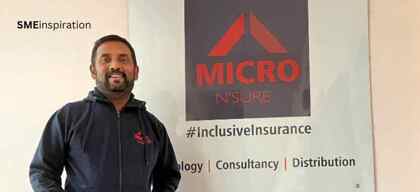Perfecting your Product—Without a huge product development team

Learning & Development
330 week ago — 6 min read
As a small or medium business, without a huge in-house product development and brand management team behind you, do you feel at a disadvantage, like you could never compete? The good news is, thanks to digital marketing trends and tools, you may not need to do it alone.
Innovation is critical
Maybe your product is tangible, something your consumers can pick up and hold in their hands. Alternatively, you may be offering a service or concept. But the one thing your product absolutely must be is special, unique and something that meets your consumers’ needs—practically and/or emotionally (ideally both).
In marketing parlance, the thing that makes your product different is known as its “unique” or “distinctive selling proposition.” This uniqueness will give you a better chance of building a strong brand, which in turn will make your product more valuable (known as “brand equity”).
But how to get from here to there? How to develop a product with the best chance of succeeding in the marketplace? As explained in Marketing in a Digital World with Aric Rindfleisch, one of the many courses available from GlobalLinker affiliate partner, Coursera, innovation is critical—whether this is innovative products and/or innovative or “disruptive” ways of doing business.
As completely new business models are rare, this course notes that most companies engage in what is known as “incremental innovation,” in which existing products are improved rather than completely invented from scratch.
Whether firms are creating entirely new products, or implementing incremental change, the traditional business model for building and managing brands, the course explains, has been to look inwards, and to utilise a company’s internal marketing, sales, research & development and branding teams. Except for test marketing stages, perhaps, customers and the external world have not been involved all that much. Until now.
Moving away from a firm-centered approach
New digital marketing tools and techniques are changing the landscape, breaking down what the course describes as a “firm-centered approach.” New products are now often not only being voted on and selected by users, but sometimes designed by them as well. This developing “co-creation” process, as the course describes it, offers exciting new opportunities for SMEs when it comes to product creation and brand management.
As required reading, the course recommends a Harvard Business Review article (Kevin J. Boudreau and Karim R. Lakhani, “Using the Crowd as an Innovation Partner,” Harvard Business Review, 91(4). 60–69) (2013)), which acknowledges, “Managers remain understandably cautious. Pushing problems out to a vast group of strangers seems risky and even unnatural, particularly to organizations built on internal innovation.” However, the article lays out the real opportunity for creativity and innovation this technique can offer, if it is properly managed.
Customer co-creation is still developing, the course concedes, but many insights have already emerged, including that people who design their own products may even be willing to pay more, as seen in one study example given, involving watches.
Getting Started
There are many factors to consider before you as an SME embark upon this kind of crowd-sourcing or co-creation process, to make sure you are managing it properly while reaping its potential rewards return.
First, your firm must generate as much content as possible, as only a small percentage of it will be valuable. Will you hold a contest? What will be the prize? You must carefully consider what will motivate your customers to submit their ideas, and especially what you are willing to give them in return—in terms of control and possibly even ownership. The ‘Marketing in a Digital World’ course describes several specific steps you can use to inspire and motivate your crowd.
Next, you must have procedures—and people—in place to evaluate the contributions you receive. Will you crowdsource the judging and final selection process as well? Or will your company make that final decision? The course describes four types of this new kind of product development for you to consider, all of which share the same basic principles but offer varying levels of firm and customer control and contribution from which you can choose:
- Tinkering
- Collaborating
- Co-Designing
- Sharing
Small and medium enterprises must take advantage of every opportunity to learn more, in order to develop and grow their businesses. Staying abreast of digital marketing trends and techniques with online courses such as Coursera’s Marketing in a Digital World is a great way to accomplish that—at a reasonable price and in a convenient online, learn-at-your-own-pace format that is perfect for busy executives.
So consider taking advantage of crowd-sourcing or co-creation, proceeding carefully to make sure that your company’s rights to the final product are fully protected. You may just find yourself with the brainpower, R&D resources and eventually revenues of a much bigger player.
Posted by
GlobalLinker StaffWe are a team of experienced industry professionals committed to sharing our knowledge and skills with small & medium enterprises.
Network with SMEs mentioned in this article
View GlobalLinker 's profile
SME Inspirations
Most read this week















Comments (1)
Share this content
Please login or Register to join the discussion